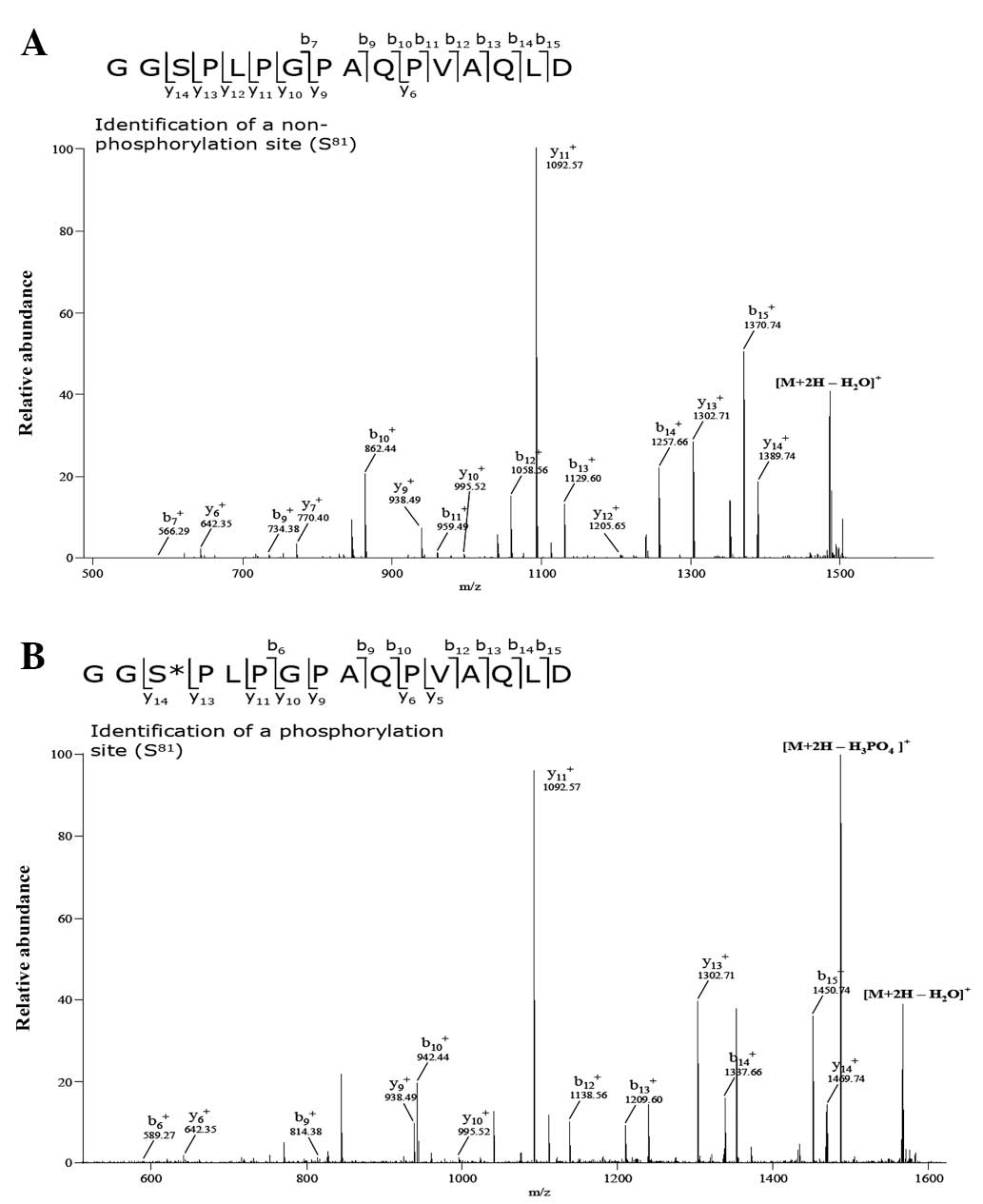Phosphorylation of cyclin O, a novel cyclin family protein containing a cyclin‑like domain, is involved in the activation of cyclin‑dependent kinase 2
- Authors:
- Do Hyung Kim
- Jong‑Hwa Park
- Bora Lee
- Kyoung Ok Jang
- In Sik Chung
- Ye Sun Han
-
View Affiliations
Affiliations: Department of Genetic Engineering and Graduate School of Biotechnology, Kyung Hee University, Giheung‑gu, Yongin‑si, Gyeonggi‑do 446‑701, Republic of Korea, Department of Advanced Technology Fusion, Konkuk University, Hwayang‑dong, Gwangjin‑gu, Seoul 143‑701, Republic of Korea
- Published online on: September 12, 2014 https://doi.org/10.3892/ol.2014.2530
-
Pages:
2769-2775
Metrics:
Total
Views: 0 (Spandidos Publications: | PMC Statistics:
)
Metrics:
Total PDF Downloads: 0 (Spandidos Publications: | PMC Statistics:
)
This article is mentioned in:
Abstract
Cell cycles, ordered series of events modulating cell growth and division, are tightly regulated by complexes containing cyclin-dependent kinases (CDKs) and cyclins. Cyclin O is a novel cyclin family protein which interacts with CDK2. However, the molecular effects of cyclin O on the activity of CDK2 have not been fully evaluated. In this study, an interaction between cyclin O and CDK2 was identified by co-immunoprecipitation and the effect of cyclin O on the kinase activity of CDK2 was investigated using cyclin O point mutants. Co‑immunoprecipitation was achieved using using HEK293 human embryonic kidney cells which were transiently transfected with vectors expressing cyclin O and CDK2, which revealed that cyclin O interacted with CDK2, particularly with the active form of endogenous CDK2. Cyclin O was expressed as several different bands with molecular weights between 45 and 50 kDa, possibly due to different post‑translational modifications. When co‑expressed with CDK2, cyclin O appeared as a band with a molecular weight of 50 kDa. Treatment with calf intestinal phosphatase reduced the intensity of the uppermost band. Mass spectroscopic analysis of cyclin O co‑expressed with CDK2 revealed that the 81st serine residue of cyclin O was phosphorylated. The in vitro kinase activity of CDK2 phosphorylating histone H1 was markedly increased in the cells overexpressing cyclin O. This activity was reduced in cells overexpressing cyclin O, in which the 81st serine had been replaced with alanine (S81A). These results suggest that cyclin O is a novel cyclin family protein that regulates CDK2 kinase activity, which is mediated by the phosphorylation of the 81st serine residue of cyclin O.
View References
|
1
|
Vermeulen K, Van Bockstaele DR and
Berneman ZN: The cell cycle: a review of regulation, deregulation
and therapeutic targets in cancer. Cell Prolif. 36:131–149.
2003.
|
|
2
|
Norbury C and Nurse P: Animal cell cycles
and their control. Annu Rev Biochem. 61:441–470. 1992.
|
|
3
|
Galderisi U, Jori FP and Giordano A: Cell
cycle regulation and neural differentiation. Oncogene.
22:5208–5219. 2003.
|
|
4
|
Sherr CJ: G1 phase progression: cycling on
cue. Cell. 79:551–555. 1994.
|
|
5
|
Ohtsubo M, Theodoras AM, Schumacher J, et
al: Human cyclin E, a nuclear protein essential for the G1-to-S
phase transition. Mol Cell Biol. 15:2612–2624. 1995.
|
|
6
|
Reed SI: Cyclin E: in mid-cycle. Biochim
Biophys Acta. 1287:151–153. 1996.
|
|
7
|
Girard F, Strausfeld U, Fernandez A and
Lamb NJ: Cyclin A is required for the onset of DNA replication in
mammalian fibroblasts. Cell. 67:1169–1179. 1991.
|
|
8
|
Walker DH and Maller JL: Role for cyclin A
in the dependence of mitosis on completion of DNA replication.
Nature. 354:314–317. 1991.
|
|
9
|
Reed SI: Control of the G1/S transition.
Cancer Surv. 29:7–23. 1997.
|
|
10
|
King RW, Jackson PK and Kirschner MW:
Mitosis in transition. Cell. 79:563–571. 1994.
|
|
11
|
Mäkelä TP, Tassan JP, Nigg EA, et al: A
cyclin associated with the CDK-activating kinase MO15. Nature.
371:254–257. 1994.
|
|
12
|
Fisher RP and Morgan DO: A novel cyclin
associates with MO15/CDK7 to form the CDK-activating kinase. Cell.
78:713–724. 1994.
|
|
13
|
Roig MB, Roset R, Ortet L, et al:
Identification of a novel cyclin required for the intrinsic
apoptosis pathway in lymphoid cells. Cell Death Differ. 16:230–243.
2009.
|
|
14
|
Muller SJ and Caradonna S: Cell cycle
regulation of a human cyclin-like gene encoding uracil-DNA
glycosylase. J Biol Chem. 268:1310–1319. 1993.
|
|
15
|
Hirst R, Gosden R and Miller D: The
cyclin-like uracil DNA glycosylase (UDG) of murine oocytes and its
relationship to human and chimpanzee homologues. Gene. 375:95–102.
2006.
|
|
16
|
Lolli G and Johnson LN:
CAK-Cyclin-Dependent Activating Kinase: A Key Kinase in Cell Cycle
Control and a Target for Drugs? Cell Cycle. 4:572–577. 2005.
|















